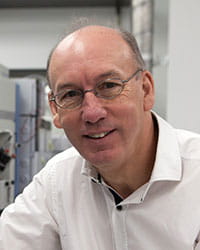Glycocholic Acid Proves Effective Against Newly Identified Amidation Defect
Published July 2015
Clinical Chemistry
On a regular basis, courier trucks deliver urine samples from around the world to Cincinnati Children’s Mass Spectrometry Lab to be analyzed for signs of cholestatic liver disease caused by genetic defects in bile acid conjugation.
It was here that lab director Kenneth Setchell, PhD, and James Heubi, MD, director of the Center for Clinical and Translational Science and Training, made the research breakthroughs that led to the 2015 FDA approval of Cholbam as a treatment for bile acid defects.
Now the scientists report developing a new protocol that will, for the first time, allow other medical centers to diagnose bile acid defects and monitor treatment.
The study describes tandem mass spectrometry (TMS) as a new tool to identify atypical bile acids, support treatment recommendations, and monitor treatment effectiveness.
The TMS method can replace fast-atom bombardment ionization mass spectrometry (FAB-MS), which was Setchell’s original standard for identifying the defects. TMS measures 3b-Hydroxy-D5-Bile acids in their natural form, Setchell says, without the need to manipulate the samples.
The newer method addresses regulatory concerns about the subjective nature of the FAB-MS approach. It also makes it easier to disseminate Cincinnati Children’s institutional knowledge about bile acid defects to other specialists.
“For years, I’ve interpreted the FAB-MS results with my eyes and my brain, just as a radiologist would read an X-ray or a histologist would examine a slide,” Setchell says. “The beauty of this new TMS method is that we now have a direct way of accurately measuring these abnormal bile acids without resorting to time-consuming and destructive chemical manipulation.”
TMS represents a universal method that can be used by other labs. “Doctors around the world don’t necessarily have to ship samples here,” Setchell says.






